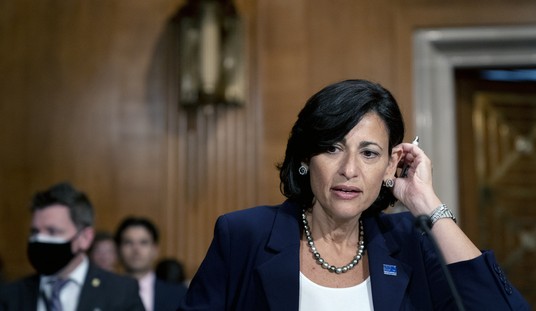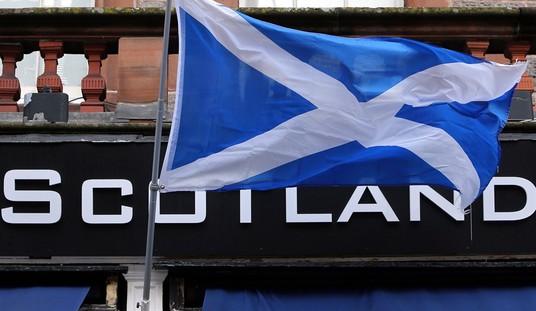Jim Pethokoukis thinks it might be, but I’m not so sure. As described by Barack Obama, the program is a significant expansion of a couple of programs that so far had been limited to Fannie/Freddie-backed mortgages. CNBC explains that the new initiative will now promote refinancing for mortgages no matter if backed by one of the two troubled GSEs or not, but with “precious few details” on hand, much of the program remains unclear:
After several largely ineffective programs to help troubled borrowers and after fruitless attempts at budging the hard-line conservator of Fannie Mae and Freddie Mac, President Obama is proposing a brand new refinance program for borrowers who are current on their mortgages, regardless of who owns their loan; the catch is that this one has to go through Congress.
“I’m sending this Congress a plan that gives every responsible homeowner the chance to save about $3,000 a year on their mortgage, by refinancing at historically low interest rates. No more red tape. No more runaround from the banks,” the President announced in his State of the Union address.
Unlike previous efforts in the refinance space, including a recently revamped and expanded government program for borrowers who owe more on their mortgages than their homes are currently worth, this plan would not be limited to those with loans backed by Fannie Mae and Freddie Mac, according to senior administration officials. The two mortgage giants own or guarantee about half of the nation’s mortgages. It would be open to all borrowers current on their loans.
The Obama administration is offering precious few details, promising more in the coming weeks, but several sources say the plan is to ask Congress to allow the government mortgage insurer, the Federal Housing Administration (FHA), to back refinances of underwater mortgages. No estimates were given as to how many borrowers such a plan could potentially help, only that this would be a voluntary, borrower-initiated plan, and not a blanket refinance of all borrowers.
There are a lot of holes in this plan, not the least of which is why homeowners who are current on payments more than three years after the collapse need government assistance. They may be underwater on their mortgages, but if they are making their payments, then they are at no risk as long as they don’t need to sell. Their monthly payments gradually will eliminate the negative equity in their asset. Refinancing will speed that up slightly by lowering interest rates, but if these houses were bought during the bubble, the current interest rate is probably low from a historical perspective anyway. And to fix the negative equity, those homeowners would have to forego saving the $3000 a year to plow it back into the principal anyway.
Pethokoukis calls this a “housing policy bombshell,” but then summarizes AEI’s Ed Pinto to explain why it will be a dud:
But surely questions will be raised if the FHA is the vehicle. As AEI’s Ed Pinto explains, the FHA’s capital position using private-industry standards shows the FHA to be deeply insolvent. The FHA is estimated to have a current net worth of –$17 billion and an estimated capital shortfall of $35–53 billion. Private regulators would shut it down rather than continuing to allow it to “grow” its way out of its insolvency. Republicans will have lots of questions and may balk if this smells like a moral hazard-inducing housing bailout. (It is just this sort of thing that launched the Tea Party movement, after all.) Then there’s the bank tax to deal with. This SOTU shocker may well be the talk of the markets today.
Pethokoukis also relies on estimates that indicate up to 10 million homeowners will take the opportunity to refinance through this program, and an average savings of $3000 per year would pump $30 billion more into the economy each year. However, if the problem is negative equity, then that money will go to paying down mortgage debt, not to increased consumer spending, which would render it impactless in the short or even medium term — and that’s assuming that the 10 million number is valid. We saw plenty of numbers like this in the proposals already put in place by the Obama administration to deal with housing issues, and the actual number of people who qualified for and received assistance fell far, far short of estimates. In fact, if the program operated as Pethokoukis assumes in generating spending cash for homeowners who are already under water, then it’s not that different from what helped drive the housing bubble in the first place: the use of home equity as an ATM for irrational consumer spending.
Being underwater on a mortgage is a tough economic position, but no tougher than people who invest in other assets and end up having less value than what they invested. If homeowners find themselves in this position, they can keep paying the mortgage and eventually get above water on equity while continuing to live in their homes, which isn’t ideal but certainly isn’t an emergency that warrants picking the pockets of other taxpayers. It also won’t do anything to prevent or minimize foreclosures, which is one of the actual problems in the housing market. This is nothing more than a bald attempt to buy a few votes at the expense of taxpayers and banks, and it will exacerbate the very problems it purports to address. Game-changer? More like an overtime period.








Join the conversation as a VIP Member